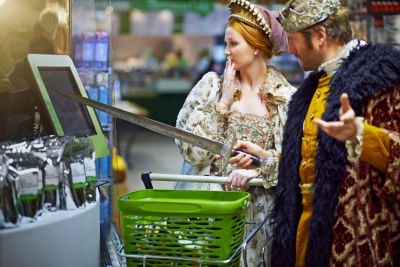Consumer payments behaviour: How do you compare?
Written and accurate as at: Jul 12, 2019 Current Stats & Facts

Every three years, the RBA conducts a Consumer Payments Survey. Importantly, the results from this survey provide a snapshot of how we make consumer payments (and how this has changed over time).
Below are just a small selection of the many interesting emerging trends that have been identified in the most recent survey*.
How do you compare to the rest of Australia?
RBA’s Consumer Payments Survey
Payment methods
In terms of the number of payments, and a particular payment method as a percentage of payments:
- cheques (0.2%) continue to decline;
- cards (52%), such as debit and credit cards, have surpassed cash (37%),
- debit cards (30%) remain ahead of credit cards (22%);
- internet/phone banking (1%), BPAY (2%), and PayPal (3%) remain relatively steady.
Interestingly, although the move away from cash has been evident across the board, a proportion of us (aged 65+) continue to rely heavily on cash as a payment method when compared to others (aged <65).
And, in terms of the value of payments, and a particular payment method as a percentage of payments:
- cards (54%) remain ahead of cash (18%),
- credit cards (28%) remain ahead of debit cards (26%);
- cheques (2%), internet/phone banking (10%), BPAY (8%), and PayPal (4%) remain relatively steady.
Payments by channel
In terms of the payments by channel, and a particular payment channel as a percentage of payments, in-person payments (86%) remain ahead of online payments (13%) and telephone/mail payments (1%).
Cash and card payments for types of purchases
In terms of merchant categories, and a particular payment method as a percentage of payments:
- cards (49%) have surpassed cash (37%) in transport;
- cash (55%) remain ahead of cards (43%) in food retail;
- cards remain ahead of cash in supermarkets, goods retail, bills, petrol/service stations, leisure/entertainment, and holidays.
And, in terms of the payment value, and a particular payment method as a percentage of payments:
- cards remain ahead of cash in ≥$21 transactions;
- cards (52%) have surpassed cash (42%) in $11-20 transactions;
- cash (62%) remain ahead of cards (32%) in lower-value (≤$10) transactions.
Interestingly, when a card payment is made, a debit card (as opposed to a credit card), is more likely to be used for ≤$20 and $101+ transactions.
Why hold a credit card?
In terms of the reasons for holding a credit card, ‘a convenient way of paying’, ‘interest-free periods’, ‘reward points’, and ‘borrowing money/smoothing spending’ are the most prevalent reasons.
Interestingly, the most prevalent reason to hold a credit card for those that are aged 30+ is convenience, whereas for those that are aged 18-29 it's the ability to borrow money/smooth spending.
Why use cash?
In terms of the reasons for using cash, ‘merchant acceptance’, ‘prefer cash for small transactions’, ‘card surcharges’, and ‘a budgeting tool/prefer using own funds’, are the most prevalent reasons.
Interestingly, the most prevalent reason to use cash for those that are frequent cash users is as a budgeting tool or a preference for using own funds, whereas for those that are infrequent cash users it’s merchant acceptance.
Furthermore, the median value of cash held in our wallet (or on us) is $40.
Bill payments
In terms of the number of bill payments, and a particular payment method as a percentage of payments:
- automatic payments (40%), such as direct debits, have increased;
- non-automatic payments, such as BPAY (21%), debit/credit cards (21%), and bank transfer (7%), as well as cash, cheque and PayPal (10%), have decreased.
Interestingly, we tend to spend more on our payday (regular income payments from employment or other sources) and the day or two after, relative to our average level of daily spending. However, this is more pronounced for automatic payments than for non-recurring (day-to-day) spending.
And, in terms of the value of bill payments, and a particular payment method as a percentage of payments:
- automatic payments (26%), such as direct debits, have increased;
- non-automatic payments, such as BPAY (24%), debit/credit cards (27%), and bank transfer (14%) remain relatively steady, whereas cash, cheque and PayPal (9%) have decreased.
Moving forward
The above may be a lot to digest, but it does provide some interesting insights into how we make consumer payments. Technological advancements, have undoubtedly played an integral part in the emerging trends.
As technology continues to advance further, it’s important to understand the influence that this may have on your consumer payments behaviour now and into the future; for better or for worse.
Spending tracker apps (and spending round up apps), contactless ‘tap and go’ card payments, and buy-now, pay-later services (Afterpay and Zip, for example); these are just a few things that come to mind.
After reading this article, you may also find the following of interest:
- Keeping your balance
- Tracking your spending
- Is money becoming an illusion?
- Liquidity – What does it really mean?
- Money personality and spending habits
- An exercise on financial literacy for kids
- Trolleyology: How supermarkets influence your buying
If you have any questions regarding this article, please do not hesitate to contact us.
*RBA. (2017). How Australians Pay: Evidence from the 2016 Consumer Payments Survey.












